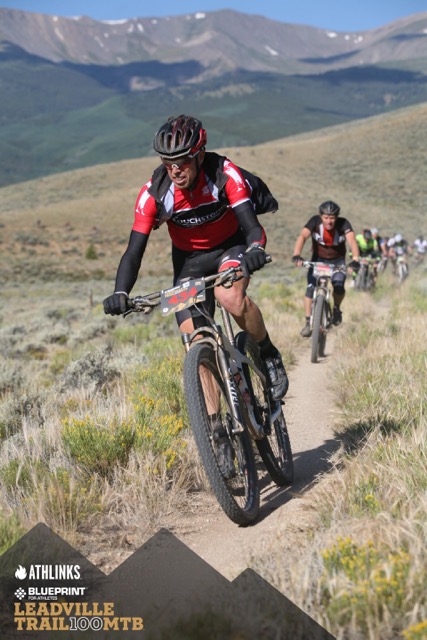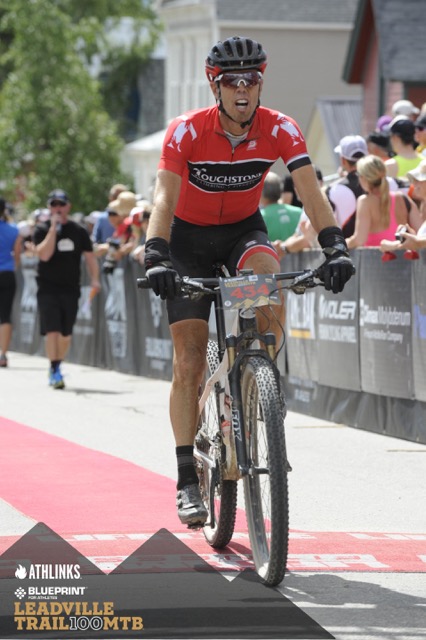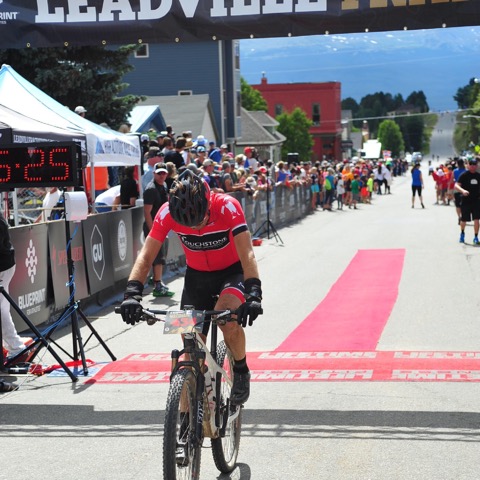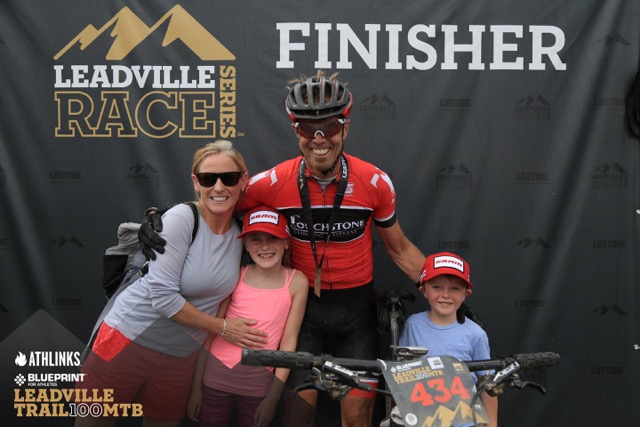Have you ever thought about your climbing habit and wondered if you should pick up an endurance sport to round things out? Any while you’re at it, something that engages the lower half of your body? Markham Connolly, Touchstone’s Director of Operations, can relate to your quest. Fifty years young and an avid cyclist, Connolly decided to compete in the 2015 Leadville 100 MTB. His primary goal was to finish in less than nine hours, well before the course cut-off of twelve hours, earning himself a proud finish for a sea level dwelling first-timer as well as the coveted Gold Buckle finishers medal.

But the Leadville 100MTB is no ordinary race. In its 21st year, the course runs one hundred miles through Colorado’s steep, rocky terrain at a blistering altitude of up to 12,424 feet. These factors help make it one of the most famous marathon events in the mountain bike racing. Connolly qualified for the suffer-fest in July after coming in 8th in his age group at the Tahoe Trail 100k.
Strategy behind racing in a mountain bike marathon is not entirely different from strategies used in climbing a big wall. The race is divided into sections, what climbers would think of as pitches, which divide notable points in the race. A certain steep hill that leads to a recovery zone that leads to a technical descent, which winds around to an aid station. Like pitches, these sections have their own personalities, places where the athlete must know to dig deep, maximize efficiencies, or minimize weaknesses. Group dynamics come into play.
You have a support crew taking care of you at aid stations, and you ride some sections in packs, playing off the other cyclists to your benefit or detriment. Connolly had trained extensively for this race, feeling confident and relaxed at the beginning. Finishing in nine hours seemed tough, but possible.

The first notable pitch was St. Kevin’s Climb, which went smoothly. He picked up the pace on the Powerline Descent and then tapped into his road bike skills to power himself from the descent to the first aid station. He and his support crew of two treated the aid stations like orchestrated pit stops. He could pee, refuel, have his chain lubed and be back on the trail in less than a few minutes.
The next notable section was the Columbine Climb, which Connolly felt well prepared for. He passed other racers and was feeling strong. But then the trail narrowed into something steeper and rockier. At this point, the course is nearing 12,000 feet in altitude. The racers were bottlenecked. And when someone pedaled past like him like he was standing still, it occurred to him to reevaluate his choice in gear. It’s like getting halfway up a pitch and realizing you brought an incomplete rack. You make due, but you also make a mental note for next time.
At the next aid station, he devoured some peanut M&Ms and decided to forego the pack strategy in favor of being able to keep trucking at his own pace, even though it meant riding alone in a headwind. Trouble came when he realized that he grossly underestimated the next pitch, which also happened to be the crux: the nearly three miles of hell called Powerline Climb.

Anything named Powerline Climb isn’t going to be a piece of cake. Eighty miles in, it’s is widely accepted to be a hike-a-bike. Essentially, this is when you pick up the bike and power walk the hill in your cycling cleats. Everyone does it. It is the mountain biking version of aid climbing. When the trail is too full of other riders or too steep and/or technical to ride efficiently, the more expeditious thing to do is get off your bike and start power hiking. He did this for over half a mile.
But the true suffering came in the three miles that followed when he got back in the saddle. It was a steady stream of false summits and the realization that steep terrain (power) is a weakness for him. This is same refrain lamented by many a route climber who decides he needs to start bouldering.
With eight miles left to go, Connolly seriously doubted he’d be able to hit his nine-hour goal. But the crowd got thicker and more raucous, and Connolly dug deep. And when he finally crossed over the finish line? He had hit 8:55:01 with five minutes to spare, a proud finish, and a gold belt buckle.

In then end, Connolly calls it the most difficult endurance race he’s ever done, but not the most difficult mental challenge. If he had to pick something even more demanding than a 100 mile mountain bike race at 12,000 feet in under nine hours, what would that be? Climbing his first big wall in Yosemite.
Congratulations, Markham!

